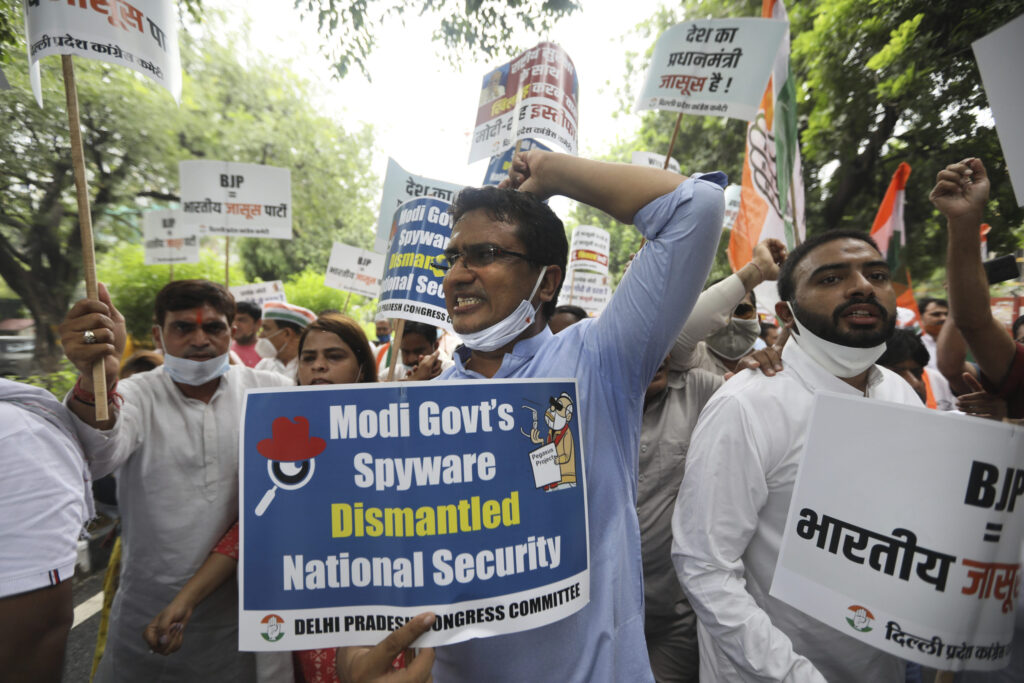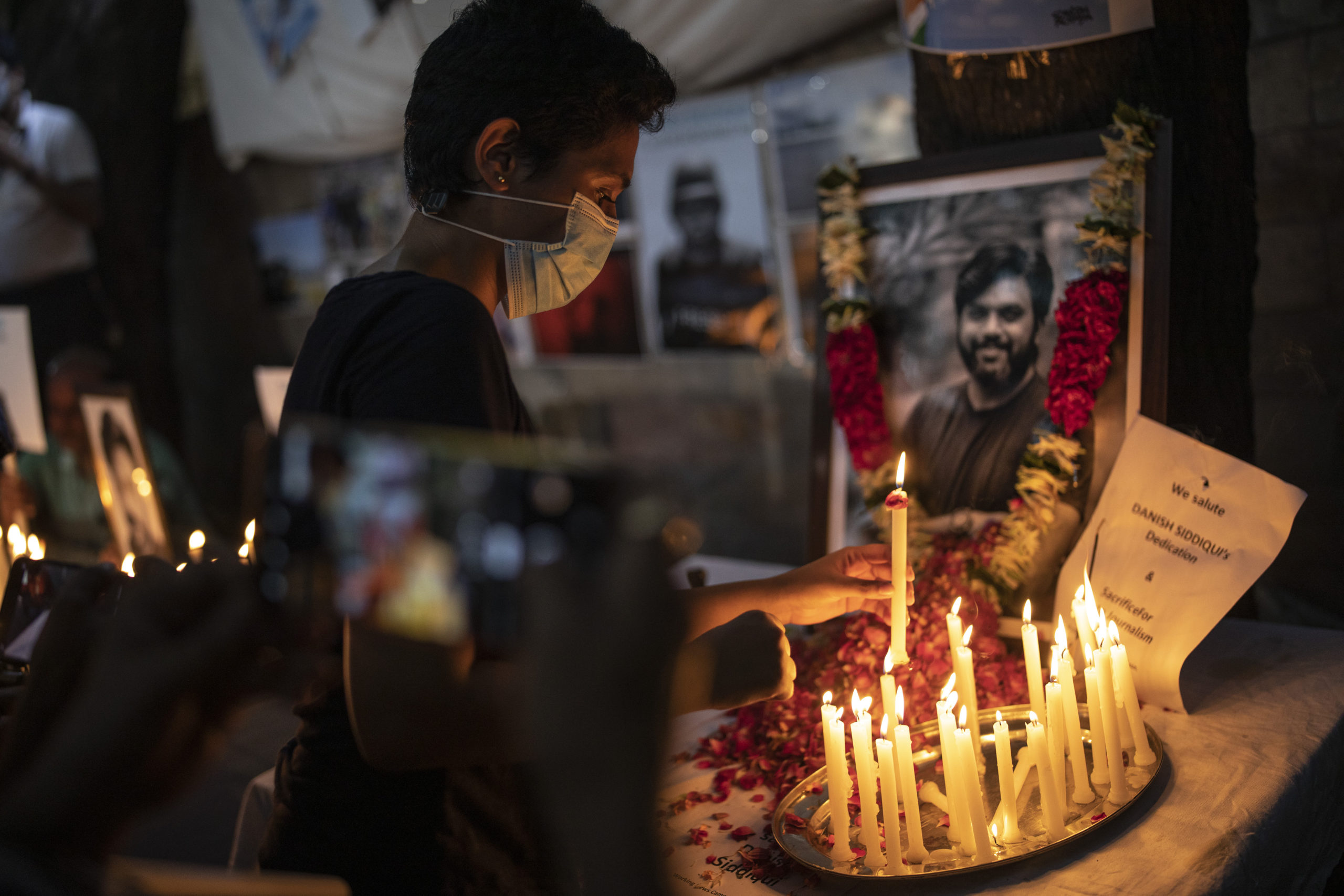Functioning democracies are all alike; every dysfunctional democracy is dysfunctional in its own way.
India, where the free press has played a crucial role in protecting democratic institutions since independence in 1947, is now one of the world’s most dangerous countries for journalists. Hindu nationalist Prime Minister Narendra Modi has launched an unparalleled assault on truth, with the free press cast as the enemy of the state.
The response to the death of Indian photojournalist Danish Siddiqui is a case in point.
On July 16, Siddiqui was killed by Taliban terrorists in Kandahar, Afghanistan. He was covering the clash between Afghan special forces and Taliban fighters for Reuters. At 38, he had already won a Pulitzer Prize for Feature Photography for documenting Myanmar’s Rohingya refugee crisis. His colleagues described him as “a man who cared deeply about the stories he covered.” Condolences poured in from around the world, with Afghan President Ashraf Ghani, the U.S. State Department, and United Nations secretary general António Guterres expressing grief at the tragic news.
India’s media universe is vast, with over 17,000 newspapers, 100,000 magazines, 178 television news channels, and countless websites in dozens of languages. Under Modi, this vast mediascape has been exposed to every kind of attack — editors are threatened, advertising cut off, tax investigations launched, police violence perpetrated against reporters, ambushes by the ruling Hindu nationalist Bharatiya Janata Party (BJP)’s political supporters, and reprisals from corrupt local officials. The coordinated hate campaigns, launched by BJP’s troll armies, are foundational to the systematic assault on truth in India. Discrediting and harassing journalists, especially women, is central to how the Modi government operates, with severe paranoia and vindictive cruelty.
Discrediting and harassing journalists is central to how the Modi government operates, with severe paranoia and vindictive cruelty
Over the past seven years, India’s legacy media organizations have caved under pressure, and low-resource newsrooms with small, multitasking teams — like The Caravan, Scroll, and The Wire — have found themselves in the trenches, holding the government to account, especially during the pandemic.
As of Sept. 17, the official tally for cases and deaths in India stood at 33.4 million and 444,000, respectively. Yet, researchers around the world have challenged these numbers. By conservative estimates, 495 million Indians had contracted Covid-19 by mid-May of 2021. According to a study released by the Center for Global Development, around four million Indians have died since the pandemic began. Videos of families — and hospitals — scrambling for oxygen have become enduring testaments to the mismanagement of this pandemic. Modi, his government, his party, his supporters, and their science denialism bear direct liability for the carnage brought on by the virus.
Independent local and regional newsrooms, together with families of the dead, have come together to document deaths during the deadly second Covid-19 wave, which the Modi administration has under-reported by a factor of ten, according to the study.
The changing political mood has meant that audiences have started to invest in local, independent newsrooms.
“It is almost entirely due to the support of our readers and views that The Wire has managed to sustain itself financially,” says Siddharth Varadarajan, founding editor of The Wire, which faces several lawsuits that allege the outlet has disseminated fake news, disobeyed an order from a public servant, and made statements designed to cause fear or alarm.
“Over the past 18 months, reader donations have been buoyant, and this is largely due to their understanding that our journalism has made a difference in these difficult times and needs to be supported.”
Vinod Jose, executive editor of The Caravan, has seen a similar bump in support. “The anger directed against Caravan’s reporting is directly proportionate to the growth in subscription we have been witnessing,” he says. “‘Watchdog journalism’ helped The New York Times, The Washington Post, and others grow the base of subscribers during the Trump presidency; we are seeing a similar pattern, at a smaller rate.” In the past few years, Caravan’s subscription has grown, both domestically and internationally, and is particularly popular among young readers and universities.
“We started The Wire with the understanding that readers would be willing to pay for quality, independent journalism,” Varadarajan says. “Our experience has validated that belief. Nor are we the only ones. I think people see a connection between how media is funded and how independent and gutsy it can be.”
People see a connection between how media is funded and how independent and gutsy it can be
Smaller newsrooms — now staffed with reporters elbowed out of legacy media organizations — have been unflinching as they document the humanitarian crisis unfolding in India’s hospitals, prisons, schools, and courtrooms. However, freelancers are struggling. “Most freelancers in India also don’t have a press card and that makes it difficult to report in a crisis like the pandemic,” says Neha Dixit, who in 2016 reported that members of a right-wing nationalist group had trafficked 31 girls in Assam state. The story was published in Outlook magazine, which now faces a criminal defamation suit for “inciting communal hatred through writing.” She could face a five-year prison term. “There is no legal support for the cases filed against me,” Dixit adds. “This is my fifth year of fighting cases filed against me because of my reportage, and [I’m] bearing the legal costs myself.”
The pandemic has torpedoed through a generation of journalists, resulting in the death of Rajkumar Keswani, for example, who issued warnings about irregularities at the Union Carbide factory for several years before the Bhopal gas disaster in 1984. During the darkest months of India’s devastating second wave, between March and May of 2021, Covid was killing three journalists a day. The death toll — 595 as of July 20 — places India among the world’s worst in terms of Covid-related deaths of journalists. We will carry for the rest of our lives the trauma of watching one of our colleagues, Vinay Srivastava, a journalist in Lucknow, Uttar Pradesh, live tweet his death, with real-time updates on his declining oxygen.

Parallel to the destruction brought on by the pandemic, the Modi administration has tightened its chokehold on the media. “Criminal prosecutions are meanwhile often used to gag journalists critical of the authorities,” notes the latest update on press freedom by Reporters Without Borders. “In 2020, the government took advantage of the coronavirus crisis to step up its control of news coverage by prosecuting journalists providing information at variance with the official position. The situation is still very worrying in Kashmir, where reporters are often harassed by police and paramilitaries and must cope with utterly Orwellian content regulations, and where media outlets are liable to be closed, as was the case with the valley’s leading daily, the Kashmir Times.”
The fears journalists had — of being spied on and targeted systematically by extrajudicial measures — were confirmed following a series of reports by the Pegasus Project, an international investigative series that revealed governments’ espionage on journalists, opposition politicians, activists, business people, and others using the private spyware developed by the Israeli technology and cyberarms firm NSO Group. Journalists, particularly those based in Delhi, were primary targets of surveillance. In all, over 40 journalists, two ministers, a Supreme Court judge, and three opposition leaders’ names have emerged as targets. Following these revelations, Modi’s government stands accused of treason and “unforgivable sacrilege” by Rahul Gandhi, India’s most prominent political opposition figure, who was also targeted by NSO Group’s surveillance software, according to the Pegasus reporting.
Modi has never been more unpopular than he is right now, as evidenced by his party’s loss in recent elections in West Bengal, India’s fourth-most populous state. India Today’s latest Mood of the Nation Survey found that Modi’s popularity had dipped from a low 38 percent in January to an even lower 24 percent in August.
Reporting the changing mood of Indian voters who have suffered economic, humanitarian, and personal tragedies under Modi seems to be journalism’s primary crime
Troll farms, on- and offline, try to fight this political swing, and in the process have brought India to the edge of a post-truth abyss where facts matter less and emotions — and political affiliations — matter more in shaping the discourse.
A 2018 report on state-sponsored trolling noted that the BJP IT cell, a mix of volunteer and paid amateur trolls, is similar to China’s “50 Cent Army” — people paid nominal sums to spread nationalistic propaganda — and tasked with targeting a “hit list” of mainstream journalists.
Reporting the changing mood of Indian voters who have suffered economic, humanitarian as well as deeply personal tragedies under Modi’s leadership seems to be journalism’s primary crime.
But India has changed. Our families, communities, and cities are devastated. Journalists are dead, and those who haven’t died continue to report on the devastation.
In Modi’s India, if Danish Siddiqui is a “jihadi,” then I am one, too. If our readers cannot tell the difference between hacks who have sold their reputations and ones who are taking bullets from terrorists in the line of duty, they lose their right to comment on the state of media. Audiences will decide the winner in the fight between the last few bastions of the free press and an increasingly authoritarian Modi administration.
The denial of facts, of changing realities of India, is the audience’s gravest offense against itself; it maximizes hatred and minimizes reason. A moral stand by readers — like those who have stepped up to support the independent reporting of outlets like The Wire and Caravan — is the only defense against the Modi administration’s regulatory capture of India’s democratic institutions.
There is no other stand.




